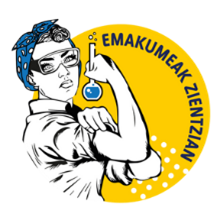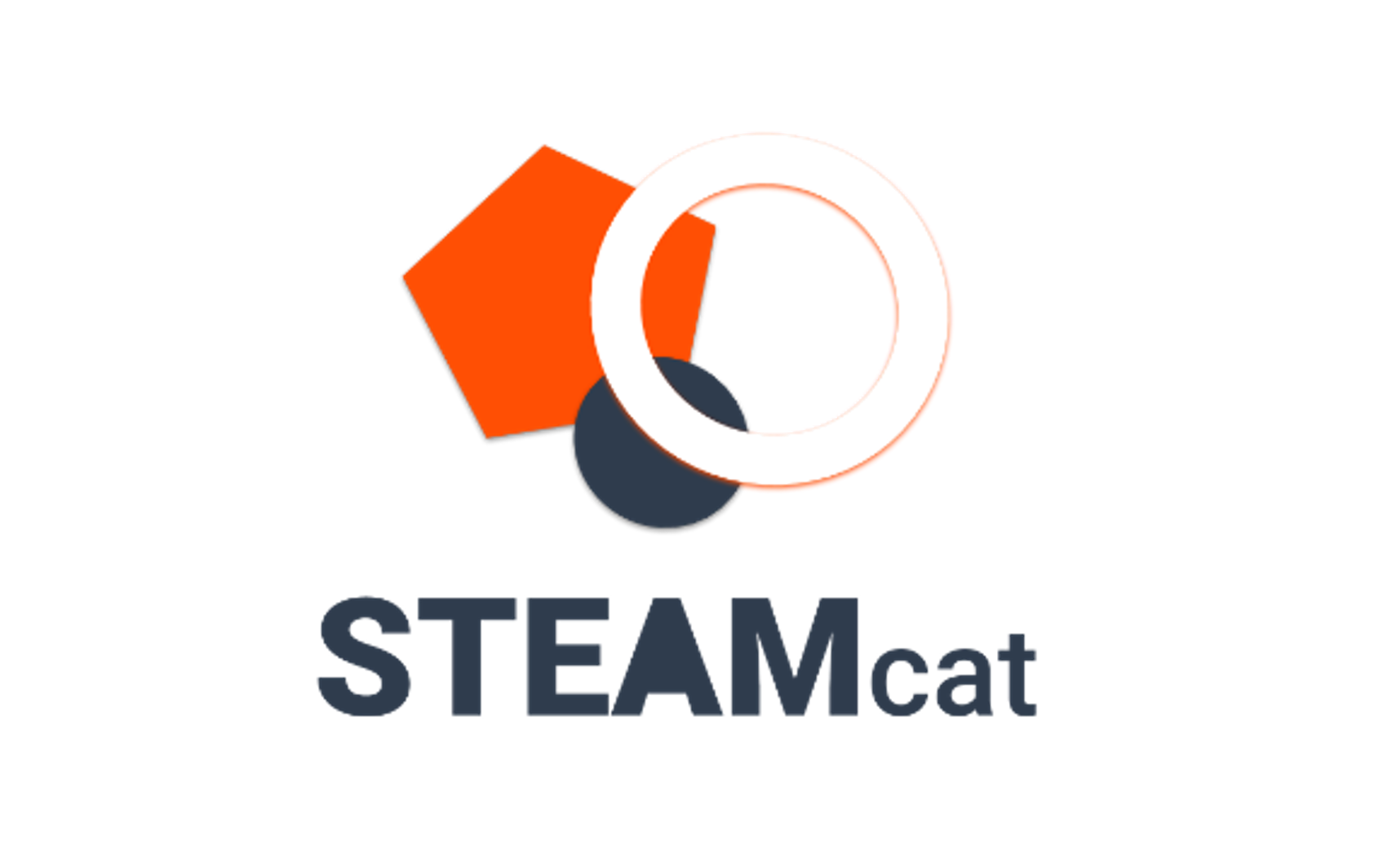Spain
Feb
20
2024
0
By secretariat
Sep
14
2023
SIMPLE
By secretariat
Short summary:
SIMPLE aims to exchange good practices about peer learning methods which foster social inclusion among migrants and refugees in vocational education and training structures.
Description and objectives:
Within the project the partners will develop pedagogical material for facilitating the inclusion ofrefugees in educational systems in order to enable social integration and a reduction of unemployment rates of the adolescents concerned.
Country:
Education level:
Link to programme website:
Logo or photo:

Focus:
Impact:
-
Reach:
-
Budget and funding model:
Funded by Erasmus+
Year start:
2017
Status:
Year end:
2019
Sep
15
2022
Emakumeak Zientzian
By admin
Short summary:
Emakumeak Zientzian is a project focused on increasing gender equality in STEM through a range of activities, with a strong focus on STEAM. The programme was created by POLYMAT (Basque Center for Macromolecular Design and Engineering) and is supported by 17 organisations in all education levels from the STEM ecosystem in the Basque Country (Spain).
Description and objectives:
Emakumeak zientzian is a project promoted by POLYMAT (Basque Center for Macromolecular Design and Engineering) which was set up in 2017 in order to inspire science, technology and engineering vocations among girls and female adolescents, as well as to contributing to combat the gender stereotypes associated with research jobs. The project was launched on February 11 - the International Day of Women and Girls in Science – as a purely promotional activity. However, over time it has become a programme of STEAM activities aimed at different segments of the population and run by Polymat and a further 17 entities from the Basque scientific and technology ecosystem.
Currently the programme involves over 25 activities which are implemented annually. The majority of these activities are directly focused on inspiring science, technology and engineering vocations in girls and female adolescents and for them to aspire to careers in those areas, as well as to contributing to combatting gender stereotypes.
Emakumeak Zientzian’s accolades include:
- Gender perspective mention by STEAM EUSKADI.
- First place in the STEAM EUSKADI Awards.
The main objective of this initiative is to address the problem of gender inequality in the STEM field by introducing the gender perspective throughout the activities programme. In addition, the programme implements two specific STEAM education objectives:
- Inspire professional careers and vocations in STEM
- Improve students’ mathematic and scientific skills
Country:
Education level:
Link to programme website:
Logo or photo:

Impact:
Impact is measured primarily through impact surveys among participants. These indicate that the programme is effective in raising interest in STEM subjects among participants.
Reach:
The programme's reach is measured as:
- Direct ivolvement of 17 science and technology partner entities that range from basic to applied research (Polymat, CIC nanoGUNE, CFM, DIPC, CIC biomaGUNE, Tecnun, CEIT, Biodonostia Health Research Institute, Elhuyar, Euskal Zientzia Museoa, Gipukoa Institute of Industrial Engineers, Technology Parks of the Basque Country, Lortek, BCBL, Gipuzkoa School of Engineering – University of the Basque Country (UPV/EHU), UPV/EHU Computer Science Faculty, UPV/EHU Chemistry Faculty).
- In 2021, 2.410 people directly took part in the programme's activities.
Budget and funding model:
The programme is funded by participating companies, participating universities and the Spanish Government.
Year start:
2017
Status:
Sep
13
2022
STEMotiv (full report)
By admin
Country:
Spain
Abstract:
This is the full report of the STEMotiv research, which assesses trends and developments in student motivation in the Basque Country (see 'data' page for full description).
Sep
13
2022
0
STEMotiv
By admin
Sep
13
2022
IT24
By admin
Short summary:
IT24 is a project organised by the Basque Institute of Telecommunication Engineers. The programma seeks to inspire young people to be technology leaders and solve problems in their lives and their community. It is aimed at young people from 12 upwards.
Description and objectives:
IT24 is a project organised by the Basque Institute of Telecommunication Engineers. The programma seeks to inspire young people to be technology leaders and solve problems in their lives and their community. It is aimed at young people from 12 upwards. There are two categories: Junior from 12 to 16 and Senior from 16 onwards. The participants solve a real problem set up by one of the partner companies and they have 24 hours within the same complex to solve it in diverse teams. The activity is organised annually.
The project’s main objective is to inspire young people to be technology leaders and solve problems in their lives and their community.
Junior Category Objectives:
- Foster STEAM by means of imagining to be entrepreneurs
- Learn to appreciate technology through clear examples
- Bring companies to the classrooms so students learn about the local business fabric and its problems
Senior Category Objectives
- Bring STEAM centre-stage in any challenge facing companies in the 21st century
- Encourage entrepreneurship
- Foster STEAM degrees among young people aged 16 to 18
- Opportunity for the participating companies to attract young talent
The initiative’s objective is in line with the objectives of the Basque Institute of Telecommunication Engineers, which is foster STEAM studies due to the lack of vocation in technology degree. It also seeks to overcome the gender gap in those professions.
Country:
Education level:
Link to programme website:
Logo or photo:

Impact:
The following data was recorded from post-activity surveys:
- 75% of the participants were female
- 49% of the participating students indicated that they would study a STEAM degree, 24% that they would not study a STEAM degree and 37% did not know
- The event was rated 4.75 out of 5
Reach:
Since it was implemented, the participation has been:
- 354 students
- Over 30 different companies
- 3 universities of the Basque Country
- Over 5 non-profit entities
Budget and funding model:
The programme was funded by the participating companies, Bizkaia Provincial Council and the different local councils where the event is being held.
Year start:
2018
Status:
Sep
22
2021
Transitions from Higher Education to (Higher) VET in Spain: Exploring an underresearched learning pathway in STEM
By admin
Country:
Spain
Abstract:
“It is clear that the STEM pipeline metaphor is not an accurate portrayal of the diverse, complex paths that students take to earn STEM degrees.” (National Academies of Sciences, Engineering, and Medicine, 2016).
Our starting point: An educated guess
Recent VET graduate tracking data coupled with informal conversations with teachers, students and graduates in the Asturias-region of Spain suggest that a steady stream of University Graduates have been enrolling in VET courses/qualifications in recent years. The question is, what are the drivers behind this seemingly counterintuitive career move?
While researchers have devoted time and effort to understand transitions from VET to University, this reverse and seemingly counterintuitive trend has recieved scarce attention in the academic literature.
In 2019 Ulicna et al. suggested this may be a particularly prevalent phenomenon in the last decade in EU countries severely impacted by the 2007-2008 financial crisis, and Spain is for sure one of them.
At the turn of the century Golding (1999ª) unveiled that around 40,000 students in vocational programs in Australia had previously completed a university degree. In Golding words, that was “a large, unabated, delayed, unanticipated flow both from an individual perspective and from a policy perspective occurring in spite of “ugly duckling” status of VET,” (Golding, 2000).
But is this a nation-specific occurrence or is it more widespread? And more importantly, are STEM graduates part of this flow?
Some STEM-specific research questions
- How many STEM (higher education) graduates are taking the Higher VET route (EQF Level 5) in Spain?
- Do STEM University Graduates follow STEM-related VET qualifications in similar areas?
- Is this pathway more likely for some groups of STEM degree holders (e.g Science vs Engineering) compared to those with non-related degrees?
- What is the impact of this vocational choice on employability and careers?
ETEFIL-19, a source of reliable administrative data.
With the research questions listed above in mind, the first step was to to locate and assess existing data collections to provide nationally comparable information on transitions from Higher Education Graduates to VET.
The Survey on the Transition from Education/Training to Labour Market Insertion (henceforth, ETEFIL-19) met most of our requirements. This statistical research is a joint undertaking of the Spanish Ministry of Education and Science, the Ministry of Work and Social Affairs and the National Statistics Institute (INE).
In the latest edition of the survey, a sample of 7800 Higher VET Graduates from the 2014 cohort was contacted five years after graduation (2019) to collect data on current employment status. One of the variables in this dataset (combined with other sources) allows the identification of Higher VET Graduates with a previous University Degree, and thus allows us to answer some key questions.
Interrogating the data
How many persons with a university degree completed a Higher VET course?
In 2013-2014 almost 10% (767 out of 7802) of Higher VET Graduates had already earned a university degree before transitioning into VET.
In what context did this transition take place?
This group of graduates enrolled in Higher VET in 2012, a year with a 14% unemployment rate for Higher Education Graduates (25-64 yrs old) in Spain 10 points higher than EU average.
How many STEM degree holders moved into Higher VET?
A 30% are STEM graduates coming mainly from "Engineering and Architecture" (17%) and "Science" (13%). The figure increases to almost 40% if you add to the mix a 9.5% of Health Studies degree holders but we have not included this group in the analysis due to the large differences in terms of career paths associated with this programme compared with other STEM degree programmes.
What motivated their decision?
Essentially this was a career development move. 73 % of STEM graduates enrolled in Higher VET with the intention to improve job prospects while another 18 % mentioned personal interest.
When was this decision made?
The data show this decision was not made right after completing a university degree. The median age of STEM graduates at the time of enrolment in Higher VET is 30 years old. More than 35% are 35 or older.
Who are STEM graduates in Higher VET? What’s their academic background?
63% are women. In addition to the Bachelor's degree, 31 % had also earned a Master's degree before enrolling in Higher VET. Most frequent points of origin are: Architecture graduates (31%), Sciences (25%) and Engineering (19%).
Which VET tracks do they favour?
We found STEM University Graduates in almost every Higher VET track imaginable, but they tend to choose courses in the fields of Chemistry (13.9%), Computer Science/ICT (9.1 %) and Health Safety & Environment (8.7%)
Is there any relation between previous degree and Higher VET qualification obtained?
Data reveals this group of graduates perceives the Higher VET route as a way of upskilling rather than reskilling. On average, 58% STEM Graduates chose a STEM-related Higher VET course. An example of this upskilling strategy is particularly evident in Earth Sciences graduates with 71% taking a STEM-related VET course.
Did we find STEM graduates in non-STEM Higher VET?
Yes indeed. 31% seemed to be looking for a career move. When you look at the composition of this group we mainly found Architecture (33%), Science (24%) and Engineering (13%) graduates.
Are non-STEM university graduates taking STEM-related VET qualifications?
Yes. In fact, they represent 40% of university graduates enrolled in STEM-related Higher VET Courses. This is particularly evident in Higher VET Computer Science programs where more than half of university graduates come from Humanities and Social Sciences,
What is the employment of STEM Graduates 5 years after completing Higher VET studies?
88% were in employment in 2019. This employment rate is 9 points higher than the rest of Higher VET graduates in the sample. Same situation rings true for unemployment which is lower for STEM graduates (8% vs 12.6% for the rest of the sample). However the crucial question here is…
What was most influential in obtaining employment, their previous university qualification or their Higher VET credentials?
This is not easy to determine for several reasons. In the first place because 12% got their current job before they earned their Higher VET degree. But things don´t get any easier when you focus on the graduates who found employment after 2014. A typical case would be a Chemistry graduate who obtained a Lab Technician Higher VET credential and 5 years later is working in a lab. In this scenario it is difficult to isolate the impact of the higher VET degree on overall employability.
One of the few exceptions to this rule is that group of Humanities and Social Sciences graduates in Higher VET programs in Computer Science. In this case, 5 years later 58% work in ICT occupations unequivocally related to their Higher VET degree. However this doesn´t completely rule out the possibility that their previous degree was an additional advantage in obtaining employment.
So what are the implications for STEM Education and STEM pathways in Spain?
First and foremost is the need for further research, especially into the motivations and employment outcomes of STEM graduates making this career choice. While it may be tempting to jump to conclusions merely based in economic terms, making sense of particular transitions to VET after university requires considering a wider range of factors (age, life phase, gender, geographic, personal, linguistic, cultural, social, vocational) over the course of a lifetime (Golding, 2000).
On the policy level, there’s an urgent need to leave behind excessively linear and upward metaphors to represent intersectoral movements between VET and University. In other words, time has come to accept the increasingly non-linear, ambiguous and protracted nature of transitions from school to work and act accordingly.
Impacts could be also seen in enrolment and recruitment strategies. Higher VET courses may be promoted as an alternative and appealing route into STEM for University graduates but also for University Early Leavers and other groups of adults particularly in fields and sectors facing severe recruitment difficulties (eg. ICT).
Finally, a more sophisticated and open understanding of transitions opens the door for improving career guidance services and efficiency of the education system as a whole. This entails not only a more fluid exchange of information among Universities and VET institutions but also engaging in an open dialogue on an equal footing. Faculty in both sectors need to be knowledgeable about adult life patterns, labour market demands and transitions to accommodate this group of learners in their courses and programs.
Aug
17
2021
STEAMcat plan
By admin
Country:
Spain
Abstract:
The STEAMcat Plan is an initiative ('regional STEM strategy') of the Catalan Government that responds to the current shortages / labour market demands in specific sectors related to science and technology. The plan seeks to promote STEM among young people, especially girls, groups at risk of social exclusion and with a low socio-economic background. The STEAMcat Plan was developed by a working group made up of representatives of the Department of Education (coordinator) the Department of the Presidency (Secretariat for Telecommunications, Cybersecurity and the Digital Society), the Department of Business and Knowledge and each of the Catalan universities. The plan was officially presented on May 31, 2017 by the heads of the aforementioned ministries.
The STEAMcat Plan was officially updated / relaunched in 2019 by three Catalan ministries. It includes an in-depth quantitative assessment of the current state of affairs related to STEM in Catalonia. The main objectives of the STEMcat Plan are:
- Increase the number of graduates in STEM studies, both in training professional as in university studies, in order to increase employability of young people and reversing the situation of lack of professionals in some sectors, such as ICT, and with a special emphasis on high-level people low socioeconomic status.
- Increase the proportion of women in STEM studies, both in training professional as in university studies, to correct the gender imbalance and improve the employability and employment of women in those sectors and professions in which they are underrepresented.
- Improve scientific, technological and mathematical skills in compulsory education to promote a positive and broad image of young people in these subjects as well as their social and professional interest
- Transmitting the social value of science, technology and mathematics to increase interest in these studies and professions and change social (gender) stereotypes surrounding them.
Aug
17
2021
STEAMcat schools map
By admin
Country:
Spain
Abstract:
The STEAMcat programme is an initiative of the Government of Catalonia (see 'programmes' page). The STEAMcat schools map provides an overview of all participating schools.
Aug
17
2021
STEAMcat (pedagogical innovation programme)
By admin
Short summary:
The STEAMcat pedagogical innovation program is a programme of the Government of Catalonia aimed at implementing the ojbectives of the STEAMcat plan (regional STEM strategy of Catalonia). Through teacher training, the programme develops 'STEAM centres' and projects (3 year duration), with the ultimate objective of increasing STEM uptake among young people (in particular girls and other underrepresented groups).
Description and objectives:
The STEAMcat pedagogical innovation program (from here on: 'STEAMcat') is the first project launched within the STEAMcat plan, focused on (STEM) teacher training and assessing and improving STEM skills among students in primary and secondary education.
The STEAMcat plan is an initiative ('regional STEM strategy') of the Catalan Government that responds to the current shortages / labour market demands in specific sectors related to science and technology. The plan seeks to promote STEM among young people, especially girls, groups at risk of social exclusion and with a low socio-economic background. STEAMcat was developed by a working group made up of representatives of the Department of Education (coordinator) the Department of the Presidency (Secretariat for Telecommunications, Cybersecurity and the Digital Society), the Department of Business and Knowledge and each of the Catalan universities. The plan was officially presented on May 31, 2017 by the heads of the aforementioned ministries.
Each academic year, the STEAMcat programme selects 40 teachers (20 primary and 20 secondary) to participate in te STEAMcat programme. Selected teachers:
- Carry out a STEAM center project for 3 years
- Receive the designation of 'driving core' within their institution
- Develop coordinating measures to coordinate actions between institutions
- Participate in peer-learning events organised by the STEAMcat community
- Collect and share activities within the project's community
- Track progress of their STEAM center annually
- Present a full evaluation of the outcome of their project
The STEAMcat pedagogical innovation supports participating schools through advice, the creation of the STEAMcat Community and by providing training and resources. Ultimately, the STEAMcat plan aims to raise STEM uptake among students in post-compulsary education by improving the perception of STEM as a career choice.
Country:
Education level:
Link to programme website:
Logo or photo:

Focus:
Impact:
STEAM centres developed by teachers selected in the programme are evaluated systematically using the following indicators:
- Improvement of acacemic results in STM of students in participating schools
- Increased enrollment in training cycles and baccalaureates related to the STEAM areas
- Improvement in the perception of STEM careers by students (and their family) in participating schools
- Increased participation in STEAM activities
- Incorporation of student guidance in STEAM activities
- Increased number of STEAM dicactic proposals in the curricular planning of the center
- Increased number of transversal / interdisciplinary learning methodologies used in the center
- Increased number of partnerships between participating schools and external agents (e.g. companies) that contribute to the project
Projects / centres are evaluated on individual bases. An overview of school projects and their results are published by the Government of Catalonia (see background documents)
Reach:
Each acadmic year, the programme selects and supports 40 teachers to participate in a three year programme to develop STEAM centres.
Budget and funding model:
The STEAMcat project is funded through the ordinary budgets of the participating government departments / institutions.
Year start:
2017
Status:





